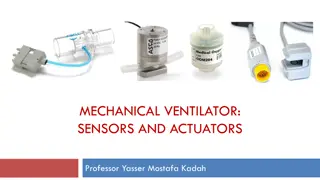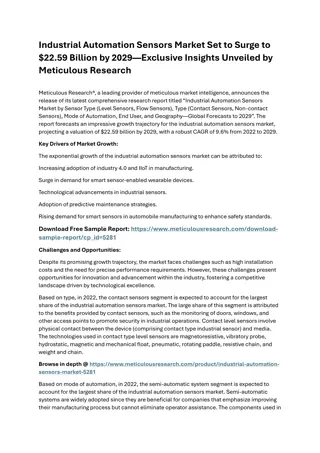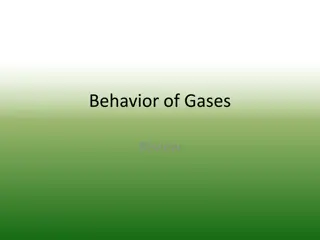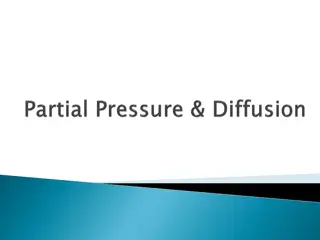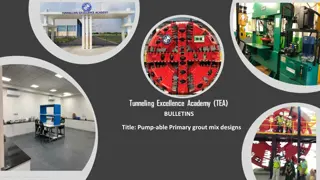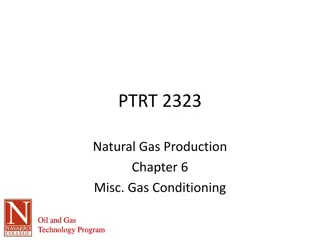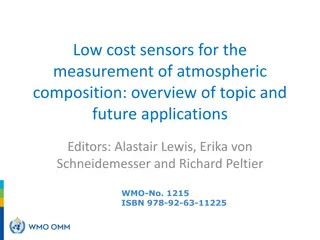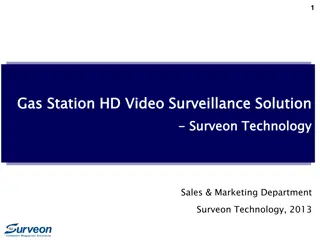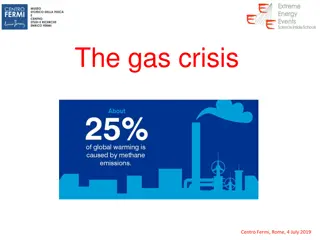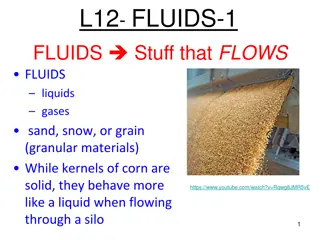Types of Gases in Tunnelling & Gas Monitoring Sensors in TBM
Understanding the types of gases encountered in tunnelling is crucial for safety. Gases like carbon monoxide, carbon dioxide, nitrogen oxides, methane, and hydrogen sulfide are common in TBM environments. Proper gas monitoring sensor placement inside the TBM is essential to detect hazardous gas levels effectively. Links to resources for gas details and real-time monitoring are provided for further information on gas safety protocols.
Download Presentation

Please find below an Image/Link to download the presentation.
The content on the website is provided AS IS for your information and personal use only. It may not be sold, licensed, or shared on other websites without obtaining consent from the author. Download presentation by click this link. If you encounter any issues during the download, it is possible that the publisher has removed the file from their server.
E N D
Presentation Transcript
BULLETINS Title: Types of Gases encounter in Tunnelling & Gas Monitoring Sensor Location inside TBM(Tunnel Boring Machine) Sensitivity: LNT Construction Internal Use
Types of Gases encounter in Tunnelling & Gas Monitoring Sensor Location inside TBM As per BS 6164 in 15.6 section The hazardous nature of gaseous contaminants in the tunnel atmosphere should be taken into account, as some are toxic, flammable/potentially explosive, radioactive or asphyxiant. It should be recognized that some contaminants display a combination of toxic and potentially explosive properties. It should also be recognized that the monitoring and control of such gases in a tunnel atmosphere can be difficult because the concentrations rarely remain constant throughout a working day. Gas monitoring sensor position/place is very important to detect exact value of gas, different types of gases have different source points and gases are presence in the atmosphere also different places, monitoring & position of the gas sensor was very important inside of the TBM. Sensitivity: LNT Construction Internal Use
Types of Gases encounter in Tunnelling & Gas Monitoring Sensor Location inside TBM Following link for the health and safety executive website(in search block enter gas name and find details): https://www.hse.gov.uk/ Following link for the real-time measurement of nitrogen monoxide in tunnels, Prepared by the Health and Safety Laboratory: https://www.hse.gov.uk/research/rrpdf/rr757.pdf Following link for the (ITA) International Tunnelling and Underground space Association library(enter key words in search engine in this following link): https://library.ita-aites.org/ Sensitivity: LNT Construction Internal Use
Types of Gases encounter in Tunnelling & Gas Monitoring Sensor Location inside TBM Most common gases encounter in tunnelling: Carbon monoxide (CO) Carbon dioxide (CO2) Nitrogen oxides(NO) Nitrogen monoxide (NO) Nitrogen dioxide (NO2). Methane (CH4) Hydrogen sulphide (H2S) As per BS EN16191(Section 5.8.4.2) : Methane monitoring sensors shall be mounted Inside TBM(Tunnel Boring Machine) at the following positions: at the highest point of the cross-section directly behind the cutter head or dust shield; in the outflow of the dust removal system; in the unloading/transfer points of the muck-conveyance. Sensitivity: LNT Construction Internal Use
Types of Gases encounter in Tunnelling & Gas Monitoring Sensor Location inside TBM Carbon monoxide (CO) The most common sources of carbon monoxide which should be considered in tunnelling are internal combustion engine emissions and blasting fume. Petrol engines should not normally be used in tunnels under construction, as their exhaust emissions can contain up to 10% carbon monoxide. Carbon dioxide (CO2) Naturally occurring sources of carbon dioxide which should be considered in tunnelling include carboniferous strata, particularly where acid groundwater acts on limestone or other calcareous rock. Other sources which should be considered include the exhaust from internal combustion engines, the combustion of carbonaceous materials and from the detonation of explosives. Carbon dioxide is heavier than air and thus accumulations should be expected in low areas and sumps. The concentration of carbon dioxide should always be measured directly and never inferred from the oxygen concentration. Nitrogen oxides(NO): The principal oxides of nitrogen encountered are nitrogen monoxide (NO) and nitrogen dioxide (NO2). Sources of nitrogen oxides which should be considered include blasting fume, welding and diesel engine exhaust fumes. Sensitivity: LNT Construction Internal Use
Types of Gases encounter in Tunnelling & Gas Monitoring Sensor Location inside TBM Methane (CH4) and other hydrocarbon gases : Methane is a potentially explosive gas which occurs naturally. When in mixtures with other naturally occurring potentially explosive gases, particularly hydrocarbons, it is also known as firedamp , particularly in mining. The main sources of methane which should be considered in tunnelling include: coal seams and other carboniferous strata; methane from geological sources dissolved in groundwater; biological decomposition of organic waste, e.g. domestic refuse in landfill; methane, released into the ground from fractured domesticgas mains; porous reservoir rocks; and ground containing organic material such as river silts Hydrogen sulphide (H2S) : Hydrogen sulphide occurs naturally as a product of the decay of organic material containing sulphur or as a result of the action of acid water on pyrites. The gas is a respiratory and eye irritant, causing bronchitis and conjunctivitis. Hydrogen sulphide is highly toxic with a characteristic smell (rotten eggs) but it is flammable and at concentrations of between 4.3% and 46.0% is potentially explosive, although these concentrations are unlikely under normal tunnelling conditions. It should be noted that exposure to concentrations of the gas as low as 20 ppm can reduce the sensitivity of the olfactory nerves, hence detection of hydrogen sulphide by smell is dangerously unreliable. Sensitivity: LNT Construction Internal Use
As per BS6164 in section 12.4 (location of gas detection and monitoring) : Where the presence of methane and other gasses is foreseeable, the air in the tunnel should be monitored. The detection system should be coupled to an alarm system in the tunnel to indicate when predetermined alarm levels are exceeded. The alarm should be differentiable from the fire alarm. All persons within the tunnel should be in a position to know that an alarm has been activated and know what measures should be taken. On activation of the alarm, emergency procedures should be implemented. BS EN 60079-29-1 should be consulted for advice on the choice and use of monitoring equipment. Monitoring should normally be carried out using fixed monitoring equipment supplemented by portable equipment: a) in the pit bottom; b) on excavation machinery at the tunnel face; c) in extraction ventilation ducts; d) in the general body of the air within the tunnel; e) at low-level points such as sumps and pits; f) where methane layering is suspected; g) in voids above crown level; h) upwind of tunnel machinery, electrical switchgear and transformers; i) areas out of the general ventilation flow such as cross-passages; j) in slurry treatment plants; k) EPB screw discharge. Measurements should be made at the start of each shift prior to the commencement of work. Data on current methane concentrations, obtained from the monitoring system, should always be available to site managers on the surface and at the tunnel face. Sensitivity: LNT Construction Internal Use
Specification - BS 6164:2011 Most commonly encountered atmospheric contaminants Contaminant Relative density Hazard Principal sources W.E.L A) Long-term limit B) Explosive Limits Lower % short-term limit C) Upper % Carbon monoxide CO 0.97 Toxic 30 ppm 200 ppm 12.5 74.2 Explosive Engines Carbon dioxide CO2 Nitrogen oxides Nitrogen dioxides 1.53 Asphyxiant 5000 ppm 15000 ppm N/A N/A Natural, engine, welding explosives 1.04 NO Toxic 25 ppm 35 ppm - - 2.62 NO2 Extremely Toxic Explosive and asphyxiate 3 ppm 5 ppm - - Methane Hydrogen Sulfide Oxygen deficiency Oxygen enrichment CH4 0.55 - - 4.4 14 Natural H2S 1.19 Toxic and explosive 10 ppm 15 ppm 4.3 45.5 Natural O2 1 Asphyxiant - < 19% O2 - - Natural, induced Stored oxygen in tunnel. Airlocks O2 1 Increased Fire risk - > 23% O2 - - A) Work place exposure limits (see Guidance Note EH40 [35] for further information). Sensitivity: LNT Construction Internal Use
Types of Gases encounter in Tunnelling & Gas Monitoring Sensor Location inside TBM PC Running with SCADA or HMI Software CH4-Methane O2-Oxygen Trolex Controller CO-Carbon Monoxide CO2-Carbon Dioxide CO-Carbon Monoxide CO2-Carbon Dioxide NO2-Nitrogen Dioxide H2S-Hydrogen Sulfide CH4 Methane, O2 - Oxygen Sensitivity: LNT Construction Internal Use
THANK YOU Sensitivity: LNT Construction Internal Use
END Sensitivity: LNT Construction Internal Use






